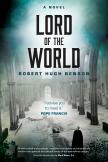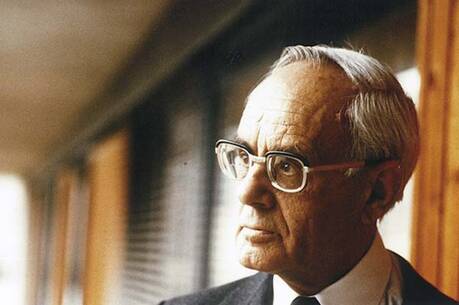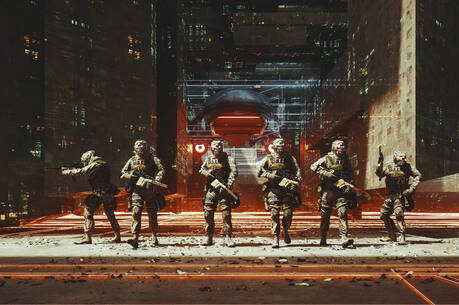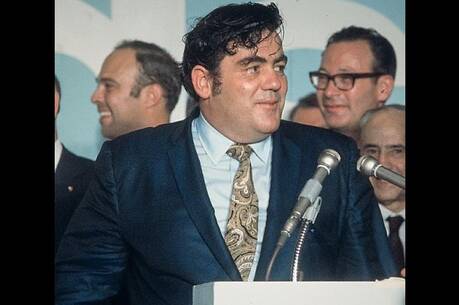A Book Reborn
The point, supported by scriptural references from the Book of Daniel, the Gospels, the letters of Paul and the Book of Revelation and by centuries of church teaching is well taken: The world will careen toward an apocalyptic confrontation between a faithful remnant and the forces of evil. Preceded by the metastatic growth of secular humanism and the appearance of the anti-Christ, to whom numbers of apostates will pledge themselves, this global cataclysm will lay the foundation for the return of Christ in glory, a final judgment and the inauguration of a new heaven and a new earth.
It certainly hits home right now, as we observe the world in which we live: pockets of military conflict, proliferating acts of terrorism, clashes between adherents of various religions, pervasive secularism, diminishment of formal affiliation to organized religion, shocking decreases in church attendance and participation in the sacramental life. Within this context, our two most recent popes have praised a relatively obscure work by a largely forgotten cleric: Lord of the World, written by Robert Hugh Benson and published in 1907.
Benson’s name drifted into relative obscurity some time ago despite his considerable reputation during the early part of the last century. Born in 1871, third son of an Anglican cleric and brother of E. F. Benson (author of the Mapp and Lucia series of novels) and A. C. Benson (master of Magdalene College, Cambridge), Hugh Benson attended Eton and Cambridge, then took Anglican orders in 1895, with his father, who by then had become the archbishop of Canterbury, as the ordaining prelate. Following his father’s death (1896), he embarked on a spiritual quest that culminated in his conversion to Roman Catholicism (1903), promptly followed by his ordination to the priesthood (1904). Benson thereby renounced family, friends and a likely elevation to bishop (with a seat in Parliament). Shock waves reverberated throughout Establishment England. The next 10 years included four years of ministry as Catholic chaplain at Cambridge (1904-8), followed by six years of writing (16 novels and many other works, including essays, sermons, poems and children’s stories) and preaching at home and in the United States. He died in 1914 at age 42.
The message of Lord of the World is neither profoundly “new” nor radically innovative. Nor is its construction. Though written during the time when modernist literary ideas were filtering into various European literatures, Lord of the World is very much a Victorian novel, with a clear, linear plot; two-dimensional characters; firm, consistent authorial voice and control; and clear demarcation into beginning, middle and end.
Lord opens with a Prologue set near the narrative present (c. 2000) with Mr. Templeton, a 90-year-old man, reviewing the upheavals of the 20th century for two Roman Catholic priests. He characterizes the war as a series of conflicts between Catholicism and humanitarianism, a grab-bag of ideas, its fundamental principle a belief that “God is man,” clearly a perversion of the Roman Catholic doctrine of the Incarnation. Templeton’s survey serves as a curtainraiser for the three part narrative that follows: Book I: Advent; Book II: The Encounter; Book III: The Victory.
One of the priests will emerge as a key character in the unfolding drama. Unlike many of his brothers who fall into apostasy, Father Percy Franklin remains faithful, asserting that the principles of Roman Catholicism, particularly those concerning transcendence and immanence, alone are capable of resisting and ultimately destroying the lethal forces of humanitarianism. To counter the dark powers of destruction, the pope establishes the Order of Christ Crucified, a group of faithful “like the Jesuits,” who, empowered by traditional, orthodox faith, enter the battle full tilt.
Arrayed against the vicar of Christ and his cohort are the anti-Christ, Julian Felsenburgh—a charismatic leader whose belief and message seem much like a pastiche of humanism, secularism, pantheism, positivism and materialism—and his followers. He articulates a man-centered gospel of inevitable progress leading to harmony and happiness. The means by which they seek to establish this entity, encompassing North America and Europe, are pragmatic, ruthless and immoral (euthanasia among them). Felsenburgh’s troops stage a series of coups across the globe. The confrontations are fierce and bloody; the results devastating, particularly at Rome where the pope, most of the cardinals and many bishops are slaughtered.
At novel’s end, a new pontiff, Silvester II, has been elected by the handful of surviving cardinals. He lives in a simple dwelling at Nazareth, humbly preparing for the return of Christ.
Despite the reputation he enjoyed, Benson, to judge from Lord of the World, is simply not a writer of the first rank. He is known to have worked hastily (how else could he have produced so many works in so short a lifetime?) and to have done little revising. His narrative is bloated and listless, acquiring shape and energy only in The Victory. Everything beforehand is necessary preparation, to be sure, but skillful editing could have strengthened the narrative without significant loss. In addition, while it may be intentional that a character like Julian Felsenburgh is two-dimensional, most other characters seem cut from the same bolt of cloth, with the possible exception of three. In Father Franklyn, the pope of Book III, we do get a sense of an inner, deeper life; and two female characters, Mabel Brand, wife of Oliver Brand, political leader in England, and her mother-in-law hover on the edge of three dimensionality but do not quite make it. Certainly, in critical terms, it is an act of literary naïveté to put Lord of the World in the same rank as Orwell’s 1984 or Huxley’s Brave New World. Indeed, such an uncritical, anachronistic judgment does a disservice to Benson’s work, the purposeful excellence of which lies elsewhere.
Robert Hugh Benson’s Lord of the World, a distinctively Catholic dystopian novel, is a thought-provoking text for anyone who struggles to a live a life of faith in our contemporary world. The careful, reflective reader finishes the novel and asks, “Where am I?” In the final analysis, though, the novel offers little hope and even less guidance. It is a darkly brooding and pessimistic exercise, perhaps all the more fascinating for that. Certainly Benson’s predictions for our time (not all of them realized, yet) rivet attention, and we can only marvel at his astounding, prescient accuracy. But human beings need hope. It may well be that Benson himself recognized that. Several years later he published The Dawn of All (1911), which offered a slightly brighter view of the end.
This article also appeared in print, under the headline “A Book Reborn,” in the March 28, 2016, issue.








